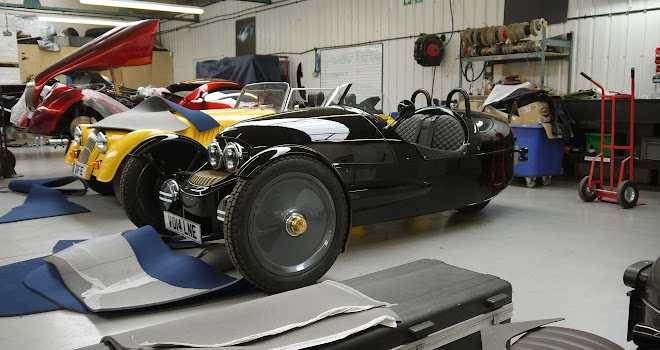Morgan has at last announced an official target date for its EV3 electric three-wheeler, with production due to begin in the third quarter of 2018.
If that sounds like a disappointingly long wait, there’s a good reason for the delay. Morgan’s announcement reveals that much has changed under the EV3’s curvy steampunk skin since the project was revealed at the 2015 Goodwood Festival of Speed.

When I spoke to Morgan chief engineer John Beech in early 2016, he was aiming for development work to be complete by the end of that year, a goal now 12 months in the past.
However, Morgan has evidently switched suppliers and is now working with Frazer-Nash Energy Systems to develop the EV3’s bespoke electric powertrain. According to Morgan the production EV3 will feature a stiffer chassis, a low-mounted 21kWh battery, and a Frazer-Nash liquid-cooled drive motor. Fast charging will be supported (though the recharge time hasn’t been specified) and range is quoted as 120 miles.
Previously, Morgan had been working with Potenza Technology, which helped develop the EV3 to the point of the prototype shown off in Selfridges livery in the summer of 2016.

That prototype EV3 featured a bespoke 20kWh lithium-ion battery developed by Potenza to fit within the nose and transmission tunnel of the standard 3-Wheeler chassis – the tubular frame had been only lightly modified to add extra crash protection in the absence of the usual nose-mounted petrol engine.
It sounds as if Morgan has rethought this strategy and made more substantial modifications to the structure to allow the battery to be carried lower in the chassis, with consequent improvements to the car’s centre of gravity and therefore its handling.

The prototype used a 46kW (62bhp) motor supplied by Ashwoods, which has been replaced by a Frazer-Nash motor rated at 34.8kW (47bhp) and up to 41.8kW (56bhp) in short bursts. Torque hasn’t yet been specified but is said to be increased over the 130Nm of the Ashwoods motor, yielding quicker acceleration.
The motor still drives the single rear wheel, though the layout may have changed – previously the motor was mounted half way along the rear swing-arm, where it added to unsprung weight. This is usually something to be avoided, though the tight confines of the EV3’s layout may well leave no other option.

Chargers and inverters (which control the power flow to and from the battery) were supplied by Italian firm Zapi for the prototype, and it seems that these vital items have also have been replaced by Frazer-Nash alternatives.
Overall, it sounds as if Morgan has gone back to the drawing board to create an improved EV3, with the company promising better performance and improved reliability over previous forecasts. That’s surely a recipe worth waiting for.





